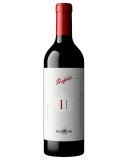Mayacamas Vineyards Cabernet Sauvignon
MAYACAMAS VINEYARDS Cabernet Sauvignon, Napa Valley Not much has changed by way of production since Bob Travers started the Mayacamas estate in the early 1940s. The fruit is handpicked early, often in early September - abvs usually end up between 13 and 14 percent to preserve natural, altitude derived acidities. Fermentations occur predominantly in open-top cement vessels which were built in the 1950s, again to preserve acidities and vibrant fruit character. Extended ageing occurs exclusively in neutral oak some as old as 100 years typically for three years which allows the vineyard's expression to shine through the powerful fruit profile, while also minimising oxygenation and helping to maintain the powerful and tight tannin structure Mayacamas is so famous for. The wines then usually spend a further two years in bottle before it is ready to be released to the market. Mayacamas make wines that lie in stark contrast to the more prevalent rich, heavily oaked, high in abv, bombastic wines that are common in the Napa Valley.
Langmeil Lineage Shiraz
https://s3-ap-northeast-1.amazonaws.com/orchestracms/eosportal/pdf/tasting-notes/langmeil-lineage-shiraz-2017.pdf
Woodlands Matthew Cabernet Sauvignon
Penfolds Dourthe
The creation of this limited release cabernet shiraz began in a quest to create something real, different, and aspiringly lofty, together with our trusted partner Dourthe Bordeaux. The French component of this wine was made at two of the Dourthe-owned wineries. Australian components of this wine were made at Penfolds Nuriootpa Winery (South Australia). The French and Australian components were blended and bottled in South Australia.
Penfolds Dourthe CabMerlot Non-Vintage
The French component of this wine was made at two of the Dourthe-owned wineries. Australian components of this wine were made at Penfolds Nuriootpa Winery in South Australia. Both components were blended and bottled in South Australia for a truly one-of-a-kind release.
Jonata El Desafio de Jonata
Penfolds Bin 149 Giftbox Nappa Valley Cabernet Sauvignon
Penfolds Bin 149 Cabernet Sauvignon seeks out Northern Hemisphere excellence via meticulous vineyard and block selection, reinforced by flagship-worthy South Australian cabernet sauvignon. The result is distinctive, and of distinction. Bin 149’s name is derived from the percentage of South Australian cabernet sauvignon synergistically woven into the blend. Napa Valley regional sourcing seeks to showcase strong tannic foundations, dark fruit intensity but with the added dimension of a unique “worldly” disposition. Matured in French and American oak, this release highlights Penfolds commitment to quality and winemaking approach.
Penfolds Superblend 802A & 802B Cabernet Shiraz
Uncork a captivating exploration of the iconic Australian blend. The 802A offers a robust symphony of blackcurrant, dark plum, and rich mocha, with a profound, muscular palate of concentrated dark fruits and firm tannins. The 802B, in contrast, presents a more perfumed nose of red cherry, subtle spice, and violet, delivering a refined yet equally full-bodied taste with elegant structure and a seamless, lingering finish.
Ornellaia Bolgheri Superiore
Bolgheri Superiore is the Italian winery, Ornellaia's flagship wine which gives rich fruit on the nose and crispy oak. The palate is lively and powerful which full, concentrated fruit flavours and impressive silky, smooth tannins leading to an elegant yet spicy, long finish.
Yalumba The Caley Cabernet Shiraz
Yalumba The Caley Cabernet Shiraz is the pinnacle of a long winemaking journey of excellence, that rightfully honours one of Yalumbas most adventurous sons. A blend of Coonawarra Cabernet Sauvignon and Barossa Shiraz, The Caley is a classic marriage of two noble varieties and two great Australian wine regions.


















